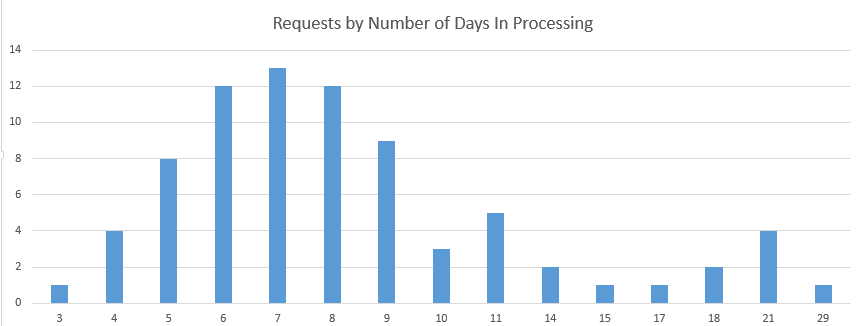This last few months a team of library staff from Access Services, Cataloging & Metadata Services, and Acquisitions & Collection Development have been working behind the scenes to improve our process of Rush Reserves – ensuring that faculty and students have expedited access to course materials. The team included: Carla Davis Cunningham, Celio Pichardo , Lori Bradley, Judy Murphy, and Katie Westbrook.
Our initial approach was modeled after a LEAN process utilized at Drexel’s library. I wrote about that in another post on this blog. Temple’s plan had three goals:
- Document a workflow that involves multiple departments in technical services in order to insure that process is as efficient as possible
- Provide an opportunity for sharing knowledge across the departments
- Engage staff in process that has potential for an improvement in service to patrons
On a big whiteboard, we collaboratively mapped out each step in this complicated workflow that includes tasks performed across three departments. We scrutinized this workflow and discussed potential for streamlining, ultimately making some improvements in acquisitions workflow. The order and cataloging process are efficient, the less predictable variable is with the vendor.
In a second assessment, we tracked 87 reserve requests that resulted in purchase during the Spring semester (2016). This exercise resulted in some good news and some less good news.
The good news. The average time it takes for an item to go from rush reserve request to “on shelf for check out” is 6-8 days. Over 64% of all items met this goal.
In the course of this workflow assessment we discovered a good portion of titles requested for course reserve, owned by the library, could not be found on the shelf. Those specific titles were analyzed, and many appear to be textbooks, or recently published books about popular topics (rap music). So perhaps the items have been hidden away for private use, or perhaps they’ve gone missing. Since this was a select group of titles, we asked whether the problem was generalizable to the entire collection.
This question led to a third “phase” of assessment – a review of an additional data source – 30,000 cancelled interlibrary loan requests, to determine the percentage of items cancelled due to not being found on the shelf. Good news again. Only a small percentage of requests, 1.5 %, are cancelled due to not being on the shelf.
Through the efforts of the project participants, we made several improvements to the Rush Reserve process. Talking through the steps, with staff members from all three departments, makes visible each department’s contribution to this complex process. Mutual appreciation for the part each played in the process is re-emphasized. The exercise “allowed” staff to safely talk about frustrations in the process and work together to resolve issues of concern. While not as elaborate an assessment as the full-fledged “LEAN” approach, the collaborative documentation is proving to be an effective and not onerous (even fun) model for improvement.

